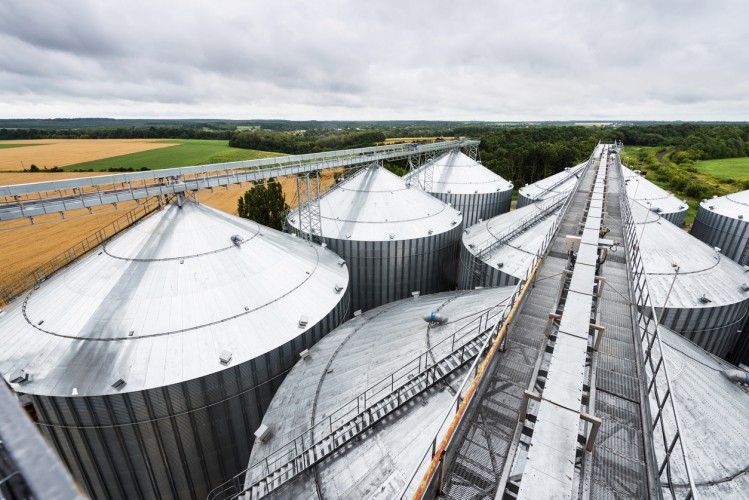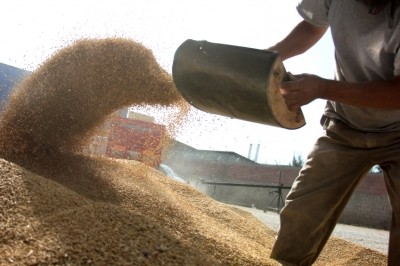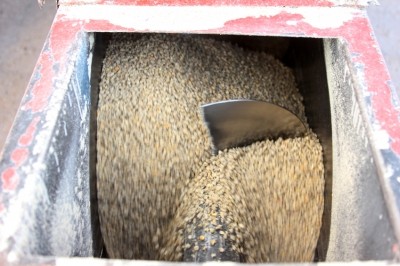New grain drying process: 'It is going to change the industry dramatically'

The agricultural technology startup recently was selected for a spot in phase one of AgLaunch365’s farm-focused accelerator program.
One goal of working with the program is to gain a better understanding of the industry, said founder Kevin Eichhorn. “We like their holistic approach,” he added.
However, the company’s focus is in changing the way that grain is dried to a method using radio waves rather than heat, he told FeedNavigator. “No one has been able to change drying; it has been done the same [way] – with heat,” he added.
“We push water out in a different way with radio frequency,” he said. “It’s so much more economical – it’s going to change the industry dramatically.”
“We love to talk with feed mill owners because you’re saving all the nutrition,” he added. “Usually it’s delivered to them burnt and dried, we can have it dried and delivered, and all the nutrition will be intact.”
Incubator efforts
The incubator was of interest because it functions differently than some others, said Eichhorn. Several members of the company have been involved in startups before – but not in the feed and grain sector.
“They’re invested to make you succeed,” he said. “We’re knowledgeable about how to develop a startup, but we’re new to the ag space. This gives us what we need in terms of introduction to the parties and timing.”
The company was one of three selected for the first phase of AgLaunch365’s efforts, the organization said. It offers six weeks of mentoring, accelerator programing, customer discovery efforts and support working with farmers and members of industry.
AgLaunch is focused on improving the connection between entrepreneurs and growers to develop new agricultural options and help modernize farms, the organization said.
Company development and expansion
Work focused on the drying process started with efforts on wood chips, said Eichhorn. The industry faces several constant challenges including fire control and dust.
Efforts to find an alternative process led to interest in the use of radio waves or what the company calls its “forcefield” technology to dry grain or feed materials from the inside out, he said. The system was designed to push water molecules out of ingredients and then use a fan remove the resulting water vapor.
“We use radio waves that create an environment where water does not want to be,” he said. “We’re not using microwaves [which are relatively short] our long waves don’t heat the material at all, or very little.”
Unbound water in a feed or feed ingredient comes away relatively quickly, he said. Drying grain from 18% down to 15% takes slightly more residency from the system.
“We’ve worked in 20,000 bushel bins [but] the system will work better the bigger the bin is,” said Eichhorn. “The size of bin is not an issue.”
The system can work with either grain stored in a bin or on flow-through models, he said. The company has evaluated about 30 different types of grains and several biomasses like alfalfa and woodchips.
“We’ve been trying yellow cake from ethanol refineries,” he said. “We’ve been working with that lately and found ways to enhance that.”
Additionally, the system could be used to reduce the presence of mold, mildew and insects, he said. “When you talk about storage of corn or meal, mold and mildew is a big problem our technology is handling,” he added.
“We can make the whole bin a non-livable environment for living organisms,” said Eichhorn. However, the system is designed not to allow radio waves to exit the structure and safety features can be added to determine if people have entered the storage container.
“You have less coming off than what comes off your cellphone,” he said. “None of our radio waves sit in the corn.”
Although the system can be added to an existing bin structure or grain storage facility, there are plans to design unique storage, he said.
However, initial commercialization efforts are more focused on work with a continuous flow system that can be scaled depending on how much grain needs to be dried, he said. That system can be adjusted to handle limited flow like 100 bushels an hour to a much larger flow rate depending on what is needed.
Looking forward
In addition to work with the incubator, DryMax is seeking several farmers or facilities to serve as initial sites for installing commercial models of the grain drying technology, said Eichhorn. The ideal farmer would be one with at least 2,500 acres.
“Farmers need to see it working,” he said. “When we say we dry without heat – that the smell and taste are there, they don’t believe us, so it has to be seen.”
The growth focus, at the moment, is in the Midwest as that is a high production area for feed grains, he said. “We’ve built many prototypes and we’re ready to launch,” he added.













